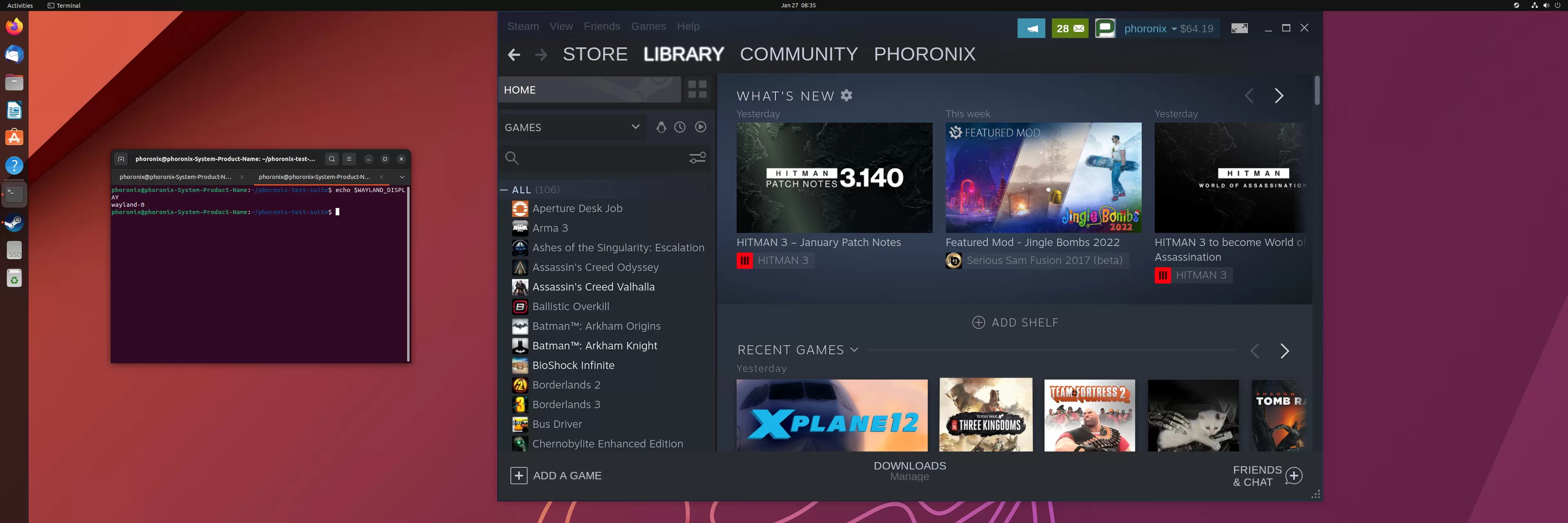- cross-posted to:
- news@lemmy.linuxuserspace.show
- cross-posted to:
- news@lemmy.linuxuserspace.show
I feel like GNOME developers need to drop what they’re doing immediately and focus on making fractional scaling usable. Hi-DPI scaling is everywhere nowadays from TVs to laptop monitors, not supporting it properly is a massive problem for all affected users.
I’d switch to Linux pretty quickly if they made using my damn laptop a usable experience without dealing with blurry apps or having to use a microscope to read text.
kde already has good fractional scaling, time to switch?
I really like the GNOME app ecosystem, I like KDE too but I’m not sure I’d make it my default desktop environment.
But then you have bad touchpad gestures… 😅
Saying that but KDE have been having fantastic 1:1 trackpad for a looong time now. And most are usable. What is bad for you? Does gnomes let you configure with gesture for which?
Gnome’s trackpad gestures are just something else. I don’t know what wizardry they’ve done.
Those in Plasma and Windows are just terrible in comparison tbh. Gnome’s are better than Apple’s, even.
But the result of those gestures(the overview) is not as useful as the overview in gnome and you have to swipe up to go to the overview and swipe up(not down for some unfanthomnable reason) again to leave the overview. A new gesture system has been added to plasma 6 which looks promising. The dev who made it said he has taken a lot of inspiration from gnome.
Basically a good 1:1 , nice overview (three fingers up, three fingers down stop), and yes you can configure in gnome (through extension I know…) the three and four fingers gestures. Also, they are as smooth as a Macbook in my experience.
Actually quite good now on Plasma 6
This is exactly what this change is about. Most blurry apps are blurry because they don’t support Wayland (yet/by default) and are running using XWayland.
The only Wayland native software where I had problems with fractional scaling is Qt WebEngine which doesn’t handle scaling correctly.
Yeah also no idea why XWayland is a problem, in general their fractional scaling is hidden, and when enabling it everything is blurry.
KDE works really well, for a long time, for Wayland and XWayland.
Meanwhile Windows 11… idk.
Windows 11 just has a fuckin grand mal seizure whenever you move a window from a scaled monitor to a non-scaled monitor.
But hey at least the scaling works!
Fractional scaling has been perfectly functional on Gnome’s Wayland implementation for some time already.
I’m guessing you’ve never used an electron app before?
That’s a problem with XWayland, not Wayland. Forcing electron apps to run using the latter generally fixes the problem.
Still no VRR baked into version 46 is a bummer.
It is. But every week I see they’ve been doing work on it.
Apparently there’s been an issue in which exiting some fullscreen programs causes the cursor framerate to come out of sync with the content on the display, causing cursor flicker.
I think Plasma also had this issue, but pushed the feature anyway then ironed out the kinks while it was in production. Now it works pretty well.
Gnome, sometimes frustratingly, doesn’t really release things until they think they’re perfect and as bug-free as possible.
And I get it, and agree, it’s led to Gnome being ridiculously polished and about as bug-free as an up-to-date DE can get.
But sometimes I’m just like damn Gnome this must be slowing down your development
Plasma never had this issue in any release, VRR has worked exactly the same since it was introduced until Plasma 6 (where there’s some improvements for the “always” mode)
Other than games, what are the benefits of variable refresh rate?
Maybe it could be integrated into other difficult to run 3D graphics workloads, like CAD or 3D design work?
But yeah pretty much just games tbh
I guess, but you’re usually not rapidly rotating models while you’re designing it. At least the workloads I’m familiar with, movements are much more deliberate and even a fixed 50 Hz laptop monitor can handle.
Adjusting the refresh rate to the performance of the desktop is one.
I also heard it would make it easier to manage multiple monitors sporting different refresh rates, although I haven’t had issues with that personally.
Adjusting the refresh rate to the performance of the desktop is one.
That’s the definition, isn’t it? Why is this better than a fixed refresh rate? Can the monitor scale the rate down to consume less power or something?
I also heard it would make it easier to manage multiple monitors sporting different refresh rates, although I haven’t had issues with that personally.
I heard that too and got similarly confused. I work with two monitors with different refresh rates (75 and 60) on Mint and it seems fine. Is X downgrading my 75 Hz monitor to 60 silently? I don’t know how to check that.
-
To avoid having to skip frames to make the desktop look more fluid, thus matching the refresh rate of the monitor.
-
I think the whole desktop runs at the higher refresh rate when you have mismatched monitors? Not sure. Wayland and X11 might differ as well on how they handle this.
X11 runs the whole desktop on the lowest refresh rate and Wayland can run each monitor at a different refresh rate
-
Can the monitor scale the rate down to consume less power or something?
In theory, yes. However, I have never seen it used that way. The only widely used applications for VRR are games and video playback.
Would be interesting to do some power measurements though.
Is X downgrading my 75 Hz monitor to 60 silently?
Yes, X does not support different refresh rates. Wayland does.
It’s mainly for games of course.
It’s also good for video, as it can play videos at the highest possible Hz multiple of the video’s FPS. So for example 24 FPS video could be played back with 144 Hz, 25 FPS with 125 Hz etc. VRR isn’t technically required for this as many non-VRR monitors support different video modes with different fixed Hz as well, but the transition between Hz is seamless (no need to change video mode).
You lost me here now. Why would want to repeat the same frame four or five times in video? Is that to add post processing effects like motion blur between them?
It’s not redrawing the frame, it’s more related to aligning the monitors refresh rate to the frame rate of the content being displayed. Alignment means your monitor doesn’t refresh the screen when the frame is only partially rendered (aka screen tearing).
Right, it doesn’t need to be multiples then, it could be the exact same refresh rate as the movie. Even those weird 25.xx refresh rates some are distributed in. Thanks for answering.
Sure could be, but with most VRR displays the VRR range starts at around 48 Hz, so 24 FPS content would play at least at 48 Hz for example.
The lowest multiple is likely what’s being used though (I’d have to check), so the numbers in my previous comment are probably off.
deleted by creator
Why does my desire for knowledge offend you?
deleted by creator
Tbh I always disable VRR because I find the flicker in games and full screen video way too distracting. At first I thought it was my previous VA monitor but the exact same thing happens on my OLED.
This isn’t normal though, it shouldn’t flicker.
Likely a driver issue. A lot of complaints on the AMD side right now relate to VRR.
This is the best summary I could come up with:
A merge request was opened this week for plumbing fractional scaling support for XWayland clients running on the GNOME Mutter compositor.
Jonas Dreßler opened a merge request with a patch from Jonas Ådah that has been working on the functionality for allowing scaling-aware XWayland clients to scale themselves using the scale-monitor-framebuffers functionality.
The patch explains: "When monitor framebuffers are scaled, this special cases Xwayland and sends output regions in a way that Xwayland think everything is N times as large as the logical region, where N is the ceil of the max monitor scale.
Dreßler noted in the merge request that the coordinate space conversion has been working out well.
Being past the feature freeze for GNOME 46, short of it being unexpectedly allowed as a late addition, it won’t be wrapped up until GNOME 47 in September.
Similarly, also missing the feature freeze is the GNOME Variable Refresh Rate (VRR) functionality.
The original article contains 237 words, the summary contains 152 words. Saved 36%. I’m a bot and I’m open source!













